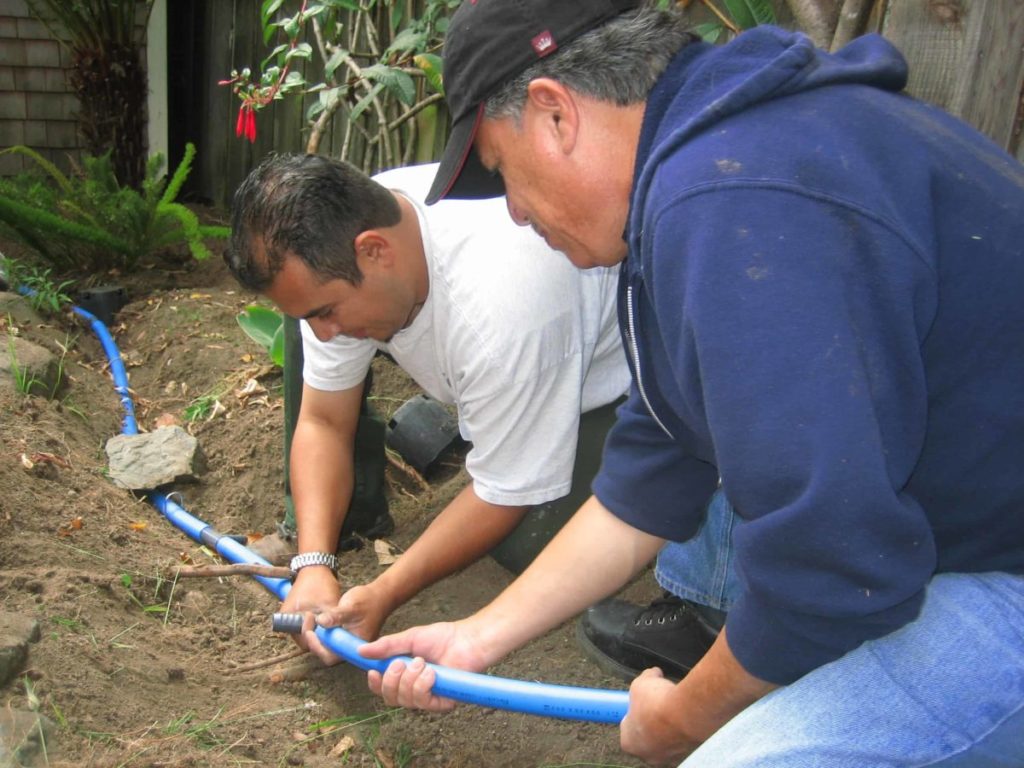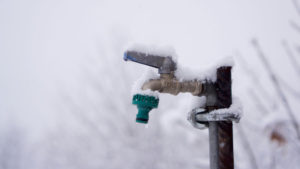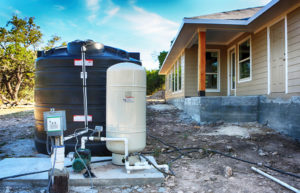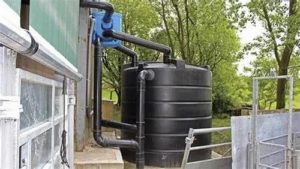Are you looking for a cost-effective and eco-friendly way to irrigate your garden or landscaping?
Do you want to reduce your water bill and do your part for the environment?
If so, then building your own greywater harvesting system may be just what you’re looking for!
Greywater is the wastewater generated from sinks, showers, and washing machines that can be reused for non-potable purposes such as irrigation.
With a simple and affordable design, you can start harnessing this valuable resource and make your home more sustainable.
We’ll walk you through the steps to design and build your own greywater harvesting system, including how to choose the right materials, how to construct the system, and how to maintain it for years of reliable performance.
Determine your needs
Before you begin designing your greywater harvesting system, it’s important to determine your needs. Consider the size of your property, the number of people living there, and your water usage habits. This will help you determine the appropriate size of your system and the amount of water you need to collect and store.
To start, consider the size of your property, the number of people living there, and your water usage habits.
These factors will help you determine the appropriate size of your system and the amount of water you need to collect and store.
For instance, if you live on a large property with multiple residents, you’ll likely need a more extensive system to accommodate your increased water demands.
If you have a high water usage rate due to activities like irrigation or industrial processes, you’ll need to prioritize a larger storage capacity to meet your needs.
By taking these factors into account, you can design a system that effectively collects, treats, and stores greywater, providing you with a reliable source of this valuable resource.
Choose the right location
The location of your greywater harvesting system is important to its success. Look for a spot that is close to your home and downhill from your bathroom and laundry rooms. This will make it easier to install the system and ensure that the water flows properly.
Choosing the right location for your greywater harvesting system is important to its success.
Look for a spot that is close to your home and downhill from your bathroom and laundry rooms.
This location will not only make it easier to install the system, but it will also ensure that the water flows properly.
By positioning the system downhill, you can take advantage of gravity to help move the water through the system, eliminating the need for additional pumps or equipment.
Being close to your home will make it easier to connect the system to your existing plumbing and irrigation lines, reducing the amount of trenching and piping needed.
Plus, you’ll be able to easily access the system for maintenance and monitoring.
Overall, taking the time to carefully select the right location for your greywater harvesting system will pay off in the long run by ensuring efficient water flow and minimizing any potential issues.
Plan your collection and storage system
Decide on the type of collection and storage system that works best for your needs. For example, you could use a series of pipes and tanks to collect and store the greywater, or you could use a single tank with multiple inputs.
When planning your greywater collection and storage system, it is essential to consider the type of system that will best suit your needs.
There are various options available, and each has its own advantages and disadvantages.
For instance, you could opt for a series of pipes and tanks to collect and store the greywater.
This approach allows for a more decentralized system, where the greywater is collected from multiple sources and stored in separate tanks.
This can be beneficial if you have a large property or multiple sources of greywater.
On the other hand, a single tank with multiple inputs can be a more streamlined and cost-effective solution.
This approach allows for all the greywater to be collected and stored in a single tank, which can be more efficient and easier to maintain.
A single tank system can be more suitable for smaller properties or those with limited space.
Regardless of the type of system you choose, it is important to consider the storage capacity and the material of the tanks.
The tanks should be made of durable, food-grade materials and should be able to hold a sufficient amount of greywater to meet your needs.
It is also important to consider the layout and placement of the tanks, as well as the size and number of pipes and fittings required for the system.
Proper planning and installation of your greywater collection and storage system will ensure that it functions effectively and meets your needs for years to come.
Use the right materials
When building your greywater harvesting system, it’s important to use materials that are safe for human consumption and free from contaminants. This may include PVC or CPVC pipes, food-grade tanks, and other components that are specifically designed for greywater harvesting.
When building a greywater harvesting system, it is essential to use materials that are safe for human consumption and free from contaminants.
PVC or CPVC pipes are ideal choices as they are durable, non-toxic, and resistant to corrosion.
These pipes can be used for both the collection and distribution of greywater, ensuring a safe and efficient system.
Food-grade tanks and other components specifically designed for greywater harvesting should be used to store and treat the greywater.
These components are designed to remove contaminants and prevent the growth of harmful bacteria, providing a safe and healthy source of irrigation water.
By using the right materials, you can ensure a safe and reliable greywater harvesting system that will provide long-lasting benefits for your garden or landscape.
Install the collection system
Once you have determined the location and designed the collection and storage system, it’s time to install the collection system. This typically involves installing pipes and fittings to direct the greywater from your bathroom and laundry rooms to the storage tank.
To successfully install the collection system, you will need to carefully plan and execute the installation of pipes and fittings to direct the greywater from your bathroom and laundry rooms to the storage tank.
This will involve measuring and cutting the pipes to the appropriate length, and connecting them to the fittings such as elbows, tees, and couplings.
You will also need to ensure that the pipes are securely fastened to the walls and floor to prevent any leaks or damage.
You may need to modify the pipes to accommodate any obstacles or changes in direction, such as around corners or under flooring.
Proper installation of the collection system is important to ensure that the system operates effectively and efficiently, and that the water is safely stored for future use.
Install the storage tank
The storage tank is the heart of your greywater harvesting system, so it’s important to choose a high-quality tank that is safe and durable. Look for a tank that is made of food-grade materials, such as HDPE, and that has a long lifespan.
Choosing the right storage tank for your greywater harvesting system is a important decision as it is the core of the system and ensures the safe and efficient collection and storage of greywater.
When selecting a storage tank, it is essential to opt for a high-quality tank that is made of food-grade materials, such as HDPE (high-density polyethylene).
HDPE is a durable and flexible material that is resistant to corrosion and has a long lifespan.
The storage tank should be designed to hold a sufficient volume of greywater, taking into account the size of your home and your water needs.
A well-designed tank will have a large capacity, but not so large that it becomes unwieldy or difficult to maintain.
The tank should have a built-in filter system to ensure that the greywater is free from contaminants and is safe for use in irrigation and other non-potable applications.
Moreover, it is important to choose a storage tank that is easy to clean and maintain.
Look for a tank that has a smooth, non-porous surface that can be easily cleaned with soap and water.
The tank should also have a secure lid to prevent odors and pests from entering the tank.
By doing so, you can ensure the safe and efficient collection and storage of greywater, which will provide numerous benefits for your home and the environment.
Connect the system to your home
Once your system is installed, it’s time to connect it to your home’s plumbing system. This will involve installing the appropriate fittings and pipes to direct the greywater to where it is needed.
To connect your greywater system to your home, you’ll need to install the appropriate fittings and pipes that will direct the greywater to where it is needed.
This process typically involves connecting the greywater pipes to your home’s existing plumbing system, using fittings such as elbows, tees, and couplings to create a seamless connection.
The type of fittings and pipes you’ll need will depend on the specific design of your greywater system and the layout of your home, so be sure to consult with a professional if you’re unsure.
You may need to consider factors such as gravity and water flow to ensure that the greywater is directed to the appropriate locations within your home.
With the right fittings and pipes, you’ll be able to effectively distribute the greywater throughout your home, maximizing its potential for water conservation and sustainability.
Test and maintain your system
After your system is installed, it’s important to test it regularly to ensure that it is working properly. Check for leaks, make sure that the system is collecting greywater as intended, and regularly clean and maintain the storage tank and pipes.
To ensure that your greywater system is functioning at its best, it’s important to test and maintain it regularly.
Start by checking for leaks in the system, including the pipes and fittings, to ensure that no water is being wasted or lost.
Next, verify that the system is collecting greywater as intended, by checking the flow rate and volume of water being collected.
Regularly clean and maintain the storage tank and pipes to prevent any buildup of sediment or debris.
This includes checking and replacing any filters or screens as needed.
By regularly testing and maintaining your greywater system, you can ensure that it continues to operate efficiently and effectively, providing you with a reliable source of water for your non-potable uses.
Want More? Dive Deeper Here!
Hey there! If you’re the type who loves going down the rabbit hole of information (like we do), you’re in the right spot. We’ve pulled together some cool reads and resources that dive a bit deeper into the stuff we chat about on our site. Whether you’re just killing time or super into the topic, these picks might just be what you’re looking for. Happy reading!






